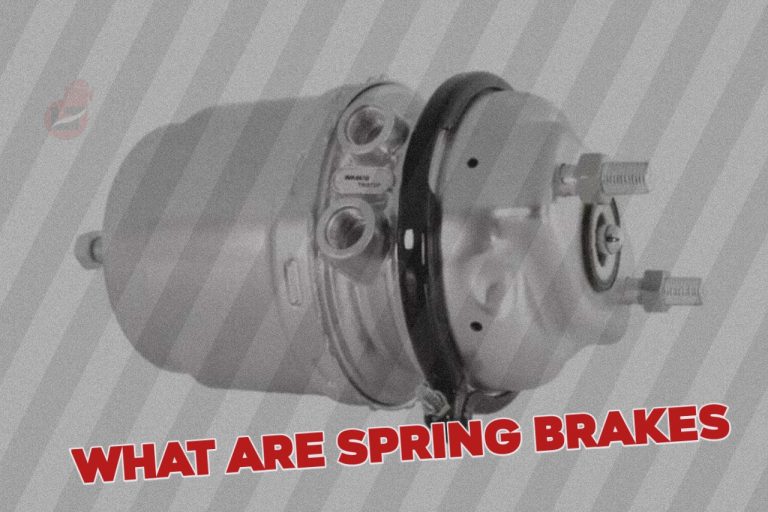This informative article will comprehensively discuss spring brakes, including their purpose, operation, subsystems, and functions.
Spring brakes are designed to engage automatically after a vehicle is parked or in the event of a service brake failure.
Disabling the Spring-Brake Chamber
A technician can use a caging bolt or another mechanism to compress or “cage” the spring in the spring brake chamber, which is crucial in moving a vehicle in an emergency. If the spring brake chamber fails, the technician can temporarily turn it off using manual caging. This process turns off the spring brake chamber, making parking and emergency braking impossible.
When a spring brake chamber is disabled or caged, the caging bolt or other mechanism protrudes, indicating it is disabled. If drivers experience a disabled spring brake chamber, it is essential to have the vehicle inspected.
Spring Brakes for Emergency Braking and Parking
Most vehicles with air brakes have an emergency braking system if the service brake system fails. This system utilizes spring brakes as the parking brake mechanism.
Spring brakes function differently than service brakes, as they do not rely on air pressure to apply and release. Instead, they use a large coil spring to provide force and hold the brakes in the applied position. Spring brakes are available in different parts and can be used with separate brake chambers. When a spring brake section is added to a service brake chamber, the resulting unit is known as a spring brake chamber.
Before spring brakes can be compressed or “caged,” they require air pressure of at least 414 kPa (60 psi) to be supplied to the chamber. Without this pressure, the spring brakes will apply automatically. However, many vehicles can still be driven even when the spring brakes are used due to the full-service brake application.
It is essential to ensure that the air brake system has sufficient pressure before driving the vehicle to prevent the spring brakes from applying unintentionally. The large coil spring in the spring brake chamber is under high tension and can cause sudden and violent motion of the brake chamber parts if tampered with, damaged, or corroded.
How do Spring Brakes Work?
When the brake pedal is pressed, brake fluid is forced through the master cylinder, passing through the ABS control module. The fluid reaches the calipers and applies pressure to squeeze the pads against the rotors.
Unlike passenger cars, heavy trucks use air pressure to apply braking power. The significant difference lies in the parking brakes, where Spring brakes are utilized. These brakes are located on the rear axle of heavy trucks and are used as parking brakes.
The parking brake can be disengaged by applying pressure to the spring side. The parking brakes will be applied once the spring is decompressed at a force of 20 lbs.
As you begin to drive, air pressure will hold back the springs. In the event of a leak that lowers air pressure, the springs will engage the brakes. This system ensures that the brakes are applied in case of a failure in the air pressure system.
Important to remember
It is crucial to remember that full-service brake application lacks sufficient braking power, which means that vehicles can only be driven with the spring brakes engaged. To prevent this situation, it is essential to ensure that the brake system has enough air pressure, typically around 60 psi.
This safety measure was put in place because, in the past, trucks with lost air pressure had difficulty coming to a controlled stop.
FAQs
Do converter dollies have spring brakes?
Yes, converter dollies have spring brakes.
How did spring brake solve the problem?
When air pressure drops, the spring in the brake chamber will decompress, giving the driver more time to react. An alarm will also sound if the pressure falls below 60 lbs.
Spring brakes have two chambers: one to release the spring and one to apply braking power. The spring is powerful and will apply braking power to the axle in case of a sudden pressure loss, keeping the vehicle under control.
Use the cage bolt if you need to move the vehicle without air pressure. Once the car is in position, the bolt should be changed or removed.
As an Amazon Service LLC Program Associate, V. Auto Basics earns from qualifying purchases. See Our Affiliate disclaimer.
